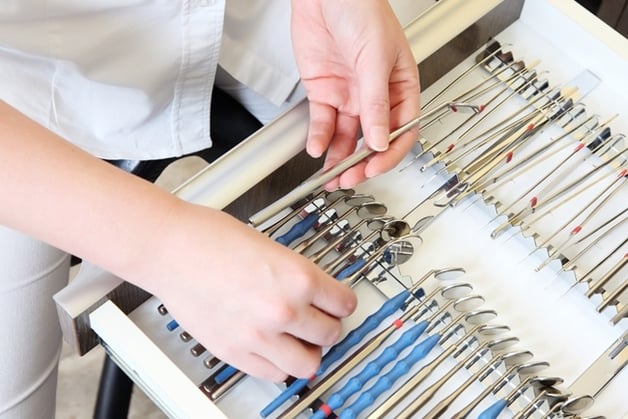
Dental air abrasion — aka dental sandblasting — is a powerful tool in the dentist’s toolbox.
As with any health care field, dentistry constantly evolves. From new and improved treatment plans to high-tech tools in dentists' offices, today's patients receive the highest level of care. Dental air abrasion, otherwise known as intraoral or dental sandblasting, is a recently developed technique that you may encounter in your future visits to the dentist.
"Air abrasion blasts away decay."
What is dental air abrasion?
Dental sandblasting provides an alternative to the typical drilling method of removing tooth decay. When filling a cavity, the dentist normally uses a drill to reach the affected area and remove all bacteria. The air abrasion technique essentially does the same job as cavity drilling, just in a different way. Instead of applying a spinning file to the tooth's surface, air abrasion blows air filled with aluminum oxide particles at the tooth to blast away decay and small portions of the tooth's structure, according to the Academy of General Dentistry.
Dental air abrasion is sometimes called intraoral sandblasting because of the similarities between the two processes. Traditional sandblasting strips and smooths surfaces, such as walls or floors, or imprints designs. For instance, sandblasting may be used to remove graffiti from a wall. Air abrasion does not use sand, but the same concept applies: air-streamed abrasives remove material off the surface of the tooth.
What is the “sandblasting” procedure used for?
Dentists may use air abrasion for many of the same procedures that require a drill. According to a study published in the Journal of Conservative Dentistry, this includes removing enamel defects, detecting and treating cavities, preparing teeth for veneers and getting rid of old fillings. Dental health professionals may also use the technique to fix small chips in the tooth.
While there are many things dentists can accomplish by sandblasting teeth, cleaning is not one of them. Air abrasion is not dangerous, but it is an unnecessarily strong tool to use for removing plaque or tartar.
Is dental air abrasion better than drilling?
While air abrasion and cavity drilling have similar characteristics, the newer technique can't replace all drilling procedures. For instance, dentists still typically prefer to use drilling for deep cavities, though they may opt for air abrasion for less severe decay.
That being said, dental air abrasion does hold certain advantages. For example, while your dental team will use a combination of gel and local anesthesia to take away the pain factor when filling cavities with a drill, all those numbing tools may not be necessary with air abrasion. Additionally, air abrasion doesn't have that same — sometimes dreadful — buzzing sound of the drill, and it provides a more gentle approach.
What does dental sandblasting cost?
If your dentist offers dental air abrasion as an option, the cost is likely very similar to the cost of cavity drilling, since the dentist will generally decide which option to employ based on the circumstances, and may even start with one and finish with the other.
To save up to 50% on dental air abrasion, join Dental Solutions discount dental plan
Talk to your dentist about your treatment options to see if this dental sandblasting procedure is right for you. New technology is always emerging or at least underway, and your dental health team may have more tools at their disposal than you realize.

